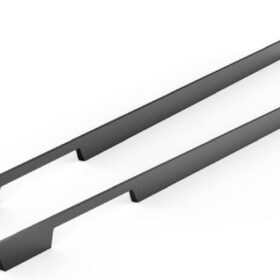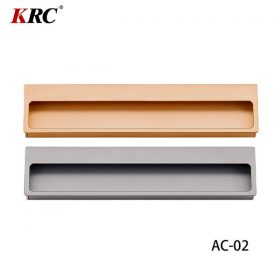The Environmental Impact of Various Horizontal Cabinet Handle Materials
In the realm of home decor, the choice of cabinet handles may seem like a trivial matter. However, the environmental implications of these seemingly insignificant components are far from negligible. Different materials used in horizontal cabinet handles have varying impacts on the environment at several stages of their lifecycle. Understanding these impacts is crucial for homeowners and designers alike to make conscious choices that align with their environmental values.
Raw Material Extraction
The extraction of raw materials for cabinet handles can have significant environmental consequences.
Wood
Wood, a natural material, can be sustainably harvested from responsibly managed forests. However, illegal logging and deforestation practices pose major threats to biodiversity and ecosystem health. Choosing wood from certified sources ensures that it has been harvested responsibly and replanted.
Metal
Metals such as aluminum, steel, and brass require mining, which can cause environmental damage through pollution and waste generation. Recycling metal is crucial to minimize the impact of mining.
Plastic
Plastic handles are made from petroleum-based materials. Extracting and refining crude oil contribute to greenhouse gas emissions and can lead to oil spills and other environmental disasters.
Manufacturing
The manufacturing process of cabinet handles also has environmental implications.
Energy Consumption
Manufacturing processes require energy consumption, which can contribute to air pollution and climate change. Choosing energy-efficient manufacturing methods and renewable energy sources can reduce this impact.
Chemical Usage
Chemical finishes and coatings, such as paint, lacquer, and chrome, can release volatile organic compounds (VOCs) and other harmful chemicals into the environment. Low-VOC finishes and non-toxic coatings are more environmentally friendly.
Waste Generation
Manufacturing can generate waste materials, such as scrap metal and plastic shavings. Proper waste management and recycling practices are essential to minimize waste accumulation.
Disposal
At the end of their lifespan, cabinet handles need to be disposed of responsibly.
Biodegradability
Wood handles are biodegradable, meaning they can break down naturally over time. Proper disposal in a compost or landfill is important.
Recyclability
Metal handles can be recycled to reduce waste and conserve resources. Recycling programs and facilities should be utilized whenever possible.
Landfill Disposal
Plastic handles that cannot be recycled end up in landfills, where they can take hundreds of years to decompose. Choosing biodegradable or recyclable materials minimizes the long-term environmental impact.
Conclusion
The environmental impact of horizontal cabinet handle materials extends beyond their aesthetics. Understanding the implications of raw material extraction, manufacturing, and disposal allows for informed choices that align with environmental goals. Choosing sustainable materials, energy-efficient manufacturing, and responsible disposal practices contributes to a greener future. By considering the environmental impact of even seemingly small components, we can collectively make a difference in protecting our planet for generations to come.
-
2024-11-29Top Trends in Modern Kitchen Cabinet Pulls for 2024
-
2024-11-28The Ultimate Guide to Modern Kitchen Cabinet Pulls- Materials, Styles, and Tips
-
2024-11-27Elevate Your Kitchen Design with These Must-Have Modern Cabinet Pulls
-
2024-11-26Sleek and Stylish- The Best Modern Kitchen Cabinet Pulls for a Contemporary Look
-
2024-09-14Exploring the Different Types of Modern Closet Door Pulls and Their Applications
-
2024-09-14How Cabinet Door Pull Handles Support High-Traffic Areas
-
2024-09-06Cost-Benefit Analysis of Investing in High-Quality Long Wardrobe Door Handles
-
2024-09-04How Flat Cabinet Handles Enhance Modern Interior Design






